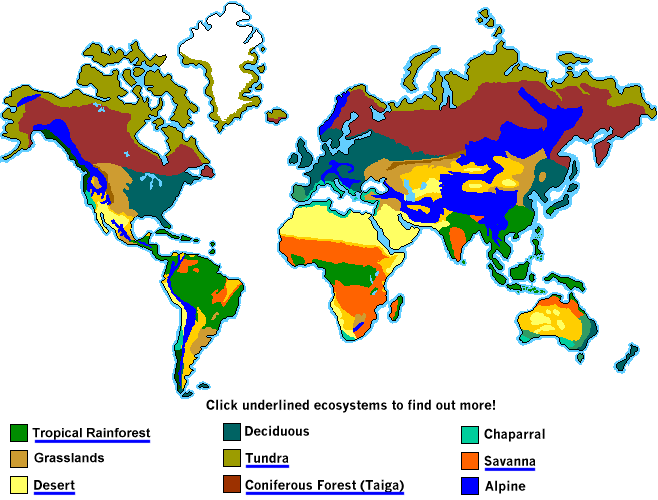 |
| Previous Image | Next Image |
| Description: Ecosystems must maintain a fragile balance for the health of all of the organisms contained within. There are different ecosystems throughout the world and each has its own unique residents. For instance, the ecosystem in a rain forest will have some species of frog that are not found in any other ecosystem in the world. There are also some species of frog that are common to many ecosystems worldwide. Many things can destroy the health of an ecosystem. For instance, pollution can adversely effect an ecosystem. Habitat destruction is also an issue for organisms within an ecosystem. Food scarcity is also an issue for the health of any ecosystem. Every organism contained within an ecosystem has a purpose. However, there are sometimes foreign entity’s introduced into an ecosystem. This can have a devastating effect on the ecosystem. Organisms work together to create optimal conditions for those that live in that ecosystem. For example, it is likely that each organism is a food source for another organism. While there will be some organisms at the top of the food chain, there must also be some at the bottom. Certain creatures, such as worms, eat organisms that are too small for the human eye to see, while larger creatures will feed on creatures that we are more familiar with, such as a lion eating a bird. Because of the food chain, the health of even the smallest creature will have an effect on the largest of creatures. If the creatures at the bottom of the food chain have poor health or carry disease, this will directly effect the health of the creatures that use them as a food source. If a creature at the top of the food chain becomes ill and die, the population of other creatures may grow too large. There is an obvious ripple effect on an ecosystem when even one resident is effected by a single environmental factor. If for example, the population of one species were to exceed its usual numbers, they would in turn, require more abundant food sources. When their food sources begin to dwindle, they may begin looking for new food sources, directly effecting the food sources of another organism. A good example of this is the population of the white-tailed deer in New Jersey and surrounding states. If allowed to continue to produce at their current rate, deer would starve to death and succumb to disease at a much higher rate than if their numbers were as they should be. One solution to cutting the number of the deer in the area is hunting. Another solution is to introduce birth control. However, the population has already caused havoc for its ecosystem. Deer have run out of food in some areas, thereby, effecting the food source of other creatures, such as rabbits. The ecosystem cannot support deer at their current population without adverse effects for the rest of the ecosystem. Ecosystems around the world have issues that adversely effect their health. While some of these disruptions are due to environmental factors, many are cause by human interference. We must work to live our lives with minimal interference to our surrounding ecosystems. This in turn, assures the health of ours. Picture Stats: Views: 1862 Filesize: 22.24kB Height: 500 Width: 658 Source: https://biology-forums.com/index.php?action=gallery;sa=view;id=10480 Keywords: ecosystem and balance |
